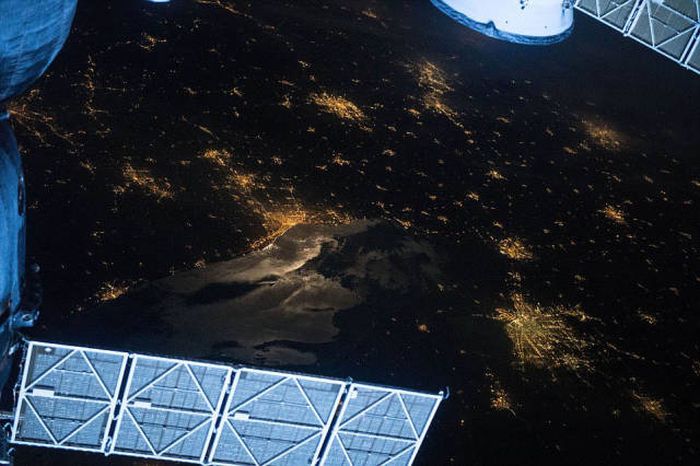|
|
Earth From Space
|
Stars, planets, asteroids and moons keep their atmospheres by gravitational attraction, and as such, atmospheres have no clearly delineated boundary: the density of atmospheric gas simply decreases with distance from the object. The Earth's atmospheric pressure drops to about 1 Pa at 100 kilometres (62 mi) of altitude. This is known as the Kármán line, a common definition of the boundary with outer space. Beyond this line, isotropic gas pressure rapidly becomes insignificant when compared to radiation pressure from the Sun and the dynamic pressure of the solar wind, so the definition of pressure becomes difficult to interpret. The thermosphere in this range has large gradients of pressure, temperature and composition, and varies greatly due to space weather. Astrophysicists prefer to use number density to describe these environments, in units of particles per cubic centimeter.
Temperature
All of the observable Universe is filled with photons that were created during the Big Bang, which is known as the cosmic microwave background radiation (CMB). There is quite likely a correspondingly large number of neutrinos called the cosmic neutrino background. The current black body temperature of this photon radiation is about 3 K (−270 °C; −454 °F). Some regions of outer space can contain highly energetic particles that have a much higher temperature than the CMB.
|
|









